Unique Adaptations of Plants
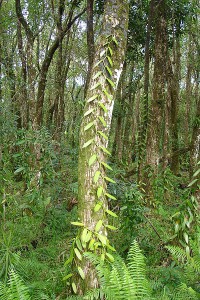
Figure 7.33: The orchid’s roots expose great surface area to the air in order to pull moisture and nutrients, while the tree supports the orchid.
Image from URL: http://en.wikipedia.org/wiki/
Plants’ ability to adapt quickly to varied and unique circumstances has enabled plants to inhabit some of the most unlikely of habitats and utilize very unique ways of gaining nutrients. In this section, we will discuss several other types of plants.
When one thinks of plant locations, soil and water come quickly to mind. However, plants also take to the air. It is true that plants do not grow wings and fly like birds, however, plants have evolved to inhabit air spaces by growing on other plants and objects. These unique plants are called epiphytes, although not all epiphytes are “air” plants. We will discuss water-borne epiphytes next.
Epiphytes are defined by their ability to utilize another plant or object for support without harming or parasitizing the support plant, and they derive water and nutrients from the air surrounding it. Orchids are a fascinating and common type of epiphyte, representing over 18,000 species types. Other epiphytes include ferns, lichen, and mosses. Because epiphyte seeds are less likely to reach suitable habitat, epiphytic plants produce large numbers of seeds and are usually spread by wind (Butler, 2006).
Epiphytes do inhabit water spaces as well, which defies the conception that epiphytes are “air” plants. Aquatic epiphytes grow in fresh and saltwater and attach to sunken logs, rocks, corals, other aquatic plants. Some types of seaweed are epiphytes.
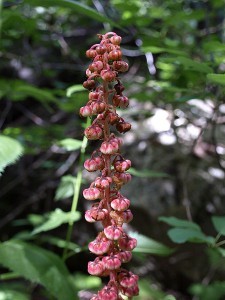
Figure 7.34: The Woodland Pinedrops (Pterospora Andromedea, Nutt.) is featured here, growing out of needle litter from a conifer. The red orbs are the plant’s ripening ovary, ready to release seed.
Image from URL: http://commons.wikimedia.org/wiki/File:Pterospora_andromedea_1.jpg
Another unique adaptation of plants is the ability to utilize other food sources and not photosynthesize. The Woodland Pinedrops Plant and the Indian Pipe Plant are heterotrophs, meaning that they do not make their own food. They completely lack chlorophyll and spend most of their time underground, with their above ground time dedicated to growing a flower and producing seed. They are typically found in the shade of trees within the deep litter, which is probably why many people have incorrectly assumed that they functioned similarly to fungus.
Botanists originally classified these types of plants as saprophytes, assuming that they were able to break down decaying plant material on their own. However, further studies have shown that saprophytes are not able to make their own food and require the help of specific fungal and conifer partners. This relationship with fungal partners has lead some botanists to challenge that these plants are actually parasitic plants that utilize the fungi to break down their food (Bakshi 1959, Voss 1996). In the specific case of the Indian Pipe Plant, the fungal partners are located in the Pipe Plant’s short, web-like root system. The roots connect to the conifer trees the Pipe Plant is growing beneath, allowing the fungus to carry sugars from the conifer to the Pipe Plant, therefore, the Pipe Plant is actually parasitic to the fungus partner.
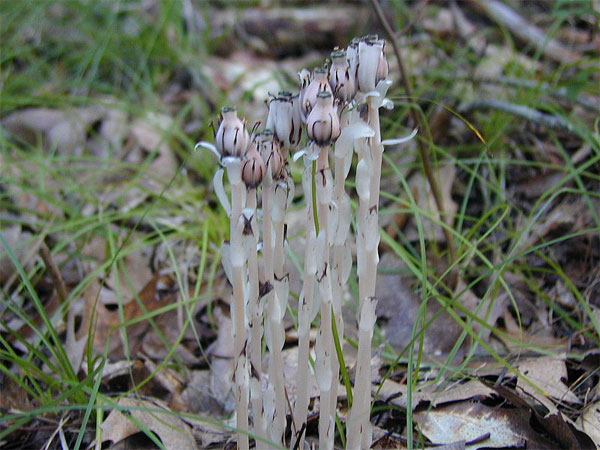
Figure 7.35: Another unique heterotroph is Indian Pipe Plant (Monotropa uniflora). The Indian Pipe plant also grows in the shade of trees within the trees’ litter and utilizes fungus to help break down its food from the litter. The beautiful white color changes to black as the plant matures and its fruit ripens. The flower heads usually start to droop once the initial growth has happened, giving the Indian Pipe plant its distinctive look and common name.
Image from URL: http://en.wikipedia.org/wiki/File:Indianpipes.jpg
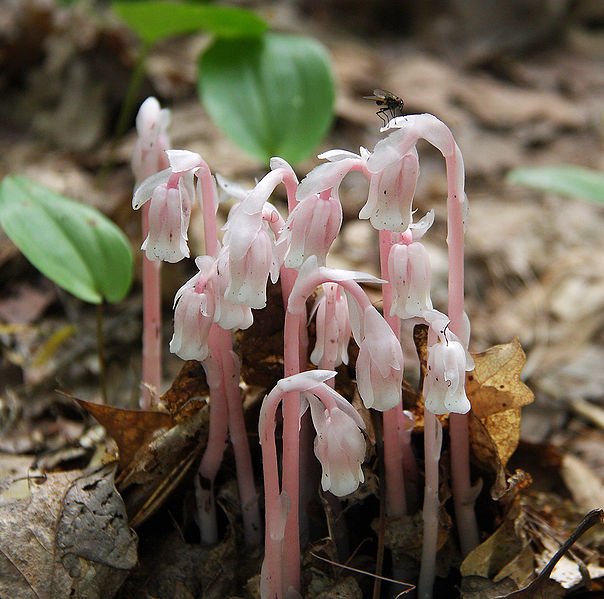
Figure 7.36: Another view of the Indian Pipe Plant with the distinctive drooping head ready to deliver seeds to the forest floor.
Image from URL: http://commons.wikimedia.org/wiki/File:Western_Meadowlark.jpg
The bryophytes are another fascinating group of plants. This group is further divided into three distinct groups: the mosses, liverworts, and hornworts. All three groups lack a vascular system, have a rhizoid root system, and reproduce via spores. Unlike the angiosperms, the bryophytes do not produce showy flowers and reproduce both asexually and sexually. The bryophytes’ reproduction system is fascinating and too complex to take in full here. Click here to begin discovering more about the bryophyte lifecycle from BiologyReference.com.
Since bryophytes lack a vascular system, they rely on osmosis to uptake water and soil nutrients through a rhizoid. Bryophytes further uptake nutrients that land on (dust) or flow through water across their surface. This reliance on osmosis results in a smaller, more compact plant as water and nutrients are not able to travel a great distance through the plant. The rhizoid “root” is actually a thread-like structure made of one or a few cells that assist the bryophyte in attaching to their chosen surface (logs, rocks, ground, etc). Bryophytes do have chlorophyll and conduct photosynthesis. However, their leaves are not true leaves as they lack a vascular system.
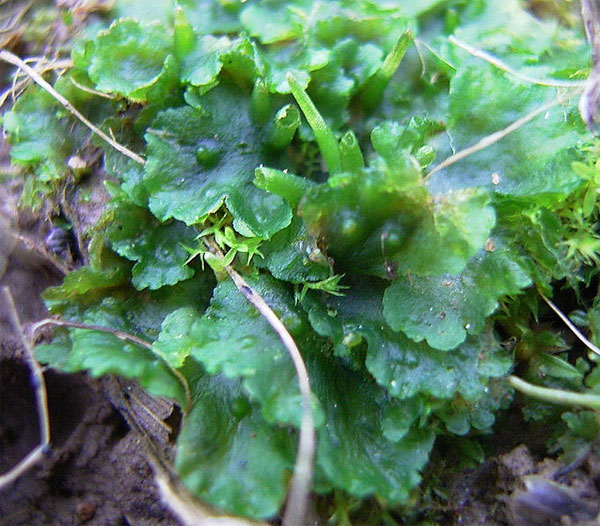
Figure 7.37: Photo of a hornwort displaying its telltale “horns” which are actually its reproductive organ, which releases the plant’s spores.
Image from URL: http://en.wikipedia.org/wiki/File:Anthoceros_levis.jpg
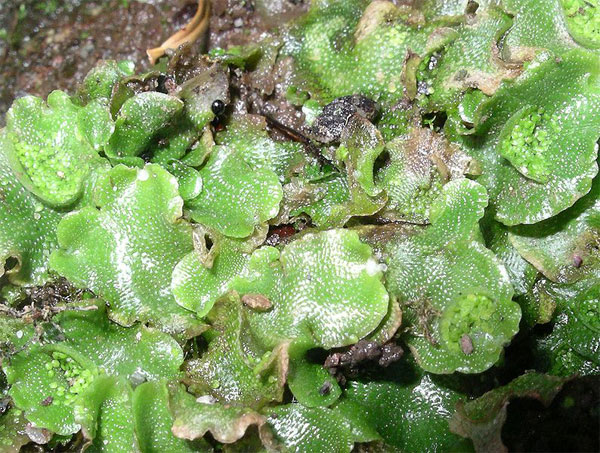
Figure 7.38: Liverwort, another common bryophyte.
Image from URL: http://en.wikipedia.org/wiki/File:Lunularia_cruciata.jpg
Parasitic plants have further adapted to gain nutrients and support by using another plant’s systems. Unlike the true epiphytes, which only require support by the host plant and do not interfere with the support plant’s systems, parasitic plants utilize other plants’ resources. They may obtain water and nutrients from the host plant and actually tap into either the host plant’s stems or roots.
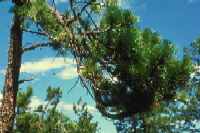
Figure 7.39: Lodgepole pine infected with dwarf mistletoe display witches’ brooms (dense, multiple branches on infected lodgepoles) and dead branches.
Image from URL: http://www.ext.colostate.edu/
The parasitic plants are categorized as those that attack roots and those that attack stems. The parasitic plants are further broken into two subcategories:
- Hemiparasitic plants are those that are partially parasitic, meaning that they only obtain water and nutrients from the host plant, but are able to photosynthesize and produce their own food to a certain degree.
- Holoparasitic plants are those that are completely dependent on a host to survive and typically do not contain any chlorophyll.
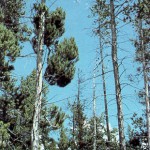
Figure 7.40: Lodgepole Pine infected with dwarf mistletoe displays dead branches.
Image from URL: http://www.fs.fed.us/r6/nr/fid/fidls/fidl-18.htm
Mistletoe is a hemiparasitic plant that is famous for its role in the Christmas tradition. In Montana, the Dwarf Mistletoe is a plant that can become a problem for conifer trees such as the Ponderosa Pine, Lodgepole Pine, and Douglas Fir.
Carnivorous plants are probably the most infamous of the Plant Kingdom and are the topic of many great Hollywood imaginations. Invasion of the Body Snatchers and Little Shop of Horrors carnivorous plants aside, most carnivorous plants obtain only part of their nutrient sources from digesting other organisms. Carnivorous plants can photosynthesize and create their own energy. They typically live in soils that are not high in nutrients, therefore making uptake of nutrients through insects necessary.
Carnivorous plants trap prey using one of four mechanisms:
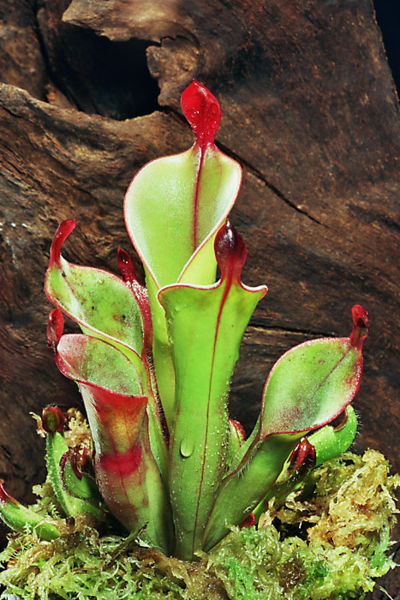
Figure 7.41: The pitcher plant utilizes a pitfall trap to capture and trap prey into a rolled leaf that contains a pool of digestive enzymes or bacteria.
Image from URL: http://en.wikipedia.org/wiki/File:H_chimantensis2.jpg,
Author: Andreas Eils
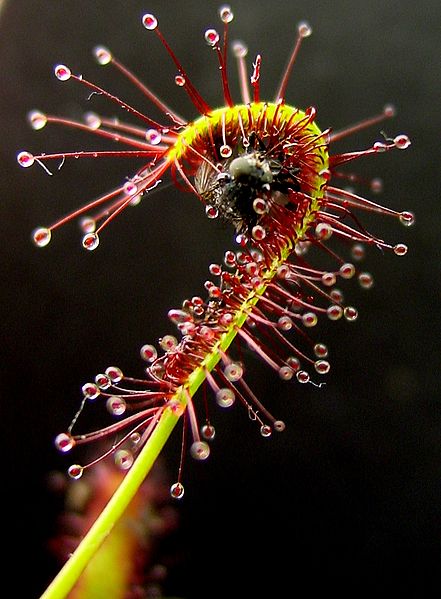
Figure 7.42: The flypaper trap uses sticky leaf substances to trap insects on the leaf surface. The sundew plant is an example of a flypaper trap. In this photo, The leaf of sundew bends in response to the trapping of an insect.
Image from URL: http://en.wikipedia.org/wiki/File:Drosera_capensis_bend.JPG,
Author: Noah Elhardt
Click here to view a time lapse of a sundew plant catching a fruit fly on Flickr.com.
Snap traps utilize rapid leaf movements and “hair” triggering systems to catch prey. The most widely recognized snap trap is the Venus fly trap. Click here to view a you tube video of a venus fly trap in action.
Bladder traps suck in prey with a bladder that generates an internal vacuum. Many bladder trap plants (bladderworts) are aquatic or live in waterlogged soils. The prey triggers a hair on the bladderwort’s surface, which initiates the vacuum. Prey are literally sucked into the plant where they are digested.
Another aquatic carnivorous plant is the lobster-pot or corkscrew plant. This plant forces prey to move toward the digestive organ by utilizing inward-pointing hairs that do not allow the organism to back out of the plant once inside. These plants seem to specialize in aquatic protazoa.
Other plants that border on being true carnivores, meaning that they actually attack their prey rather than simply waiting for prey to be in the wrong place at the wrong time, are some of the most unique and exciting plants of the carnivorous group. It is likely this group that gives rise to the imaginative Hollywood versions.
Click here to view a you tube video of the vampire plant.